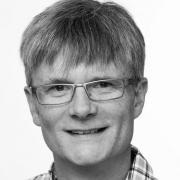Odile, Curated by David O’Halloran
The title of Odile, a group exhibition held across several venues in the City of Dandenong during May and June of 2018, refers to the ‘black swan’ character in Tchaikovsky’s famous Swan Lake. In adopting this title curator David O’Halloran referred both to the idea of a singular occurrence which upends established knowledge, and to performing arts like ballet, where music, dance and costume are brought together. The artworks in the exhibition, which include painting, installation, video, wall drawings and photography, produce surprising intersections and parallels between the visual and the performing arts. Indeed, as this ingenious exhibition demonstrates, the idea of transactions between mediums is central to the work of many artists both locally and internationally.
Throughout the selection of works in the exhibition several themes emerge. The human body is shown to not be autonomous but rather conditioned by factors which strongly shape its existence. Zoë Croggon’s mysterious, collaged intersections between sport, dance and architecture, such as Beyond Habitat (2012), highlight the intriguing parallels between the human frame in movement and the relatively static built environment. Anne Ferran’s recent series Flying Colour (2016), photographs of people holding lengths of cloth between themselves and the viewer, begs the question of what lies behind and beyond the frames of our knowledge—whether about each other or about the boundaries between performance and painting. Vanessa White shows the body as a function of the environment, as the dancer in her film 23 ̊ West I (2017)—shot against the background of an Icelandic glacier—seems to be pulled in two directions at once, up toward the empty sky with its unpredictable elements and down toward the heavy earth’s gravitational pull. [1]
Among the strongest works in the exhibition are those from the Lost Psyche series (2014) by the late Polixeni Papapetrou. By combining photography, costume and scene painting Papapetrou produced gorgeous but unsettling scenes inhabited by mythical characters (performed by her own children) in which the line between theatre and reality remains forever blurred. Theatre is also the theme of Kate Rohde’s untitled dark mirror sculpture, with its ornate frame and artificial elegance. From out of its gloomy depths the viewer expects not a reflection of self but a diabolical spirit to emerge. Tarryn Gill’s ghoulish and fascinating masks, including the sequin-encrusted Guardian Sisters (2017), are like theatrical props waiting to be animated or possessed by performers. Daring the viewer to inhabit the uncanny space of the thing, their haunting visages shock the viewer into recognition of the gossamer-thin boundary between human and non-human.
Gosia Wlodarczak’s nervous Odile drawings were performed upon the transparent surfaces of the Walker Street Gallery’s front window and the artist’s own clothing. They embody human gesture not only as a living energy of the creator but as strongly related to the everyday spaces both outside on the street and within the architecture’s four walls. The space of the street is also occupied or referred to by other artists in the exhibition, including Jenny Holzer, whose alternately laughable and inspired lists of statements titled Truisms (1977) once plastered the streetscape of cities around the world from New York to Melbourne; and Kyoko Imazu, whose delicately incised shadow puppets installed in a number of light boxes around the city centre evoke a childhood world of innocence while speaking to the menacing worlds of fairy tales and their dichotomy between good and evil.
The inclusion in the exhibition of Hung Lin, an artist from Dandenong, and Jenny Holzer, an American artist who is disconnected from the local and regional context, not only linked the southern and northern hemispheres but also refused the categorization of art as either ‘Australian’ or ‘International’, something our major exhibiting institutions still insist upon despite the intensely global character of today’s art world. If the indirect allusion to black swans in the exhibition title suggests that a residual question about Australian specificity may still be relevant to understanding local production, this exhibition shows that the new and unexpected theme of today’s art may well be the refusal of identity, whether with regard to locality or to medium.
[1] Vanessa White is the author’s sister.











